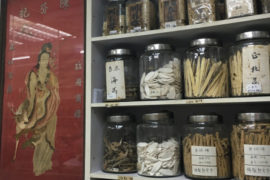The hills are very, very steep. One with vertigo would not do well in this excursion of ours deep in the mountains of Siping, home of Tieguanyin. The elevation ranges from 800 meters to 1200 meters, some maybe more, and many newly planted hillsides feature clippings from 50 year old bushes from the area. Available wind from all directions, red clay soil full of iron, and severe trims down to almost root level are some of the recent agricultural preferences with these plants, aside from steep hills and high elevations. The harvesters range from plucking by hand, to using a small crescent shaped cutter, to a machine trimmer imported from Japan or Taiwan, where one end cuts in a curved hedge fashion and the long tunnel bag at the other end holds the cuttings. Usually, they would cut about half a foot or 3-4 mature leaf lengths. After going through a sifter, the non-intact leaves are discarded. This allows the leaves to be harvested during its peak conditions without worrying about the shortage of labor. For shortage of labor in the agriculture of tea has become a pervasive problem from country to country, and particularly impactful to the nations that produce artisan level teas where hand picking was almost always the preference. Perhaps they should have offered better wages and working conditions to the monkeys, they wouldn’t have had this problem now?







Comments are closed.